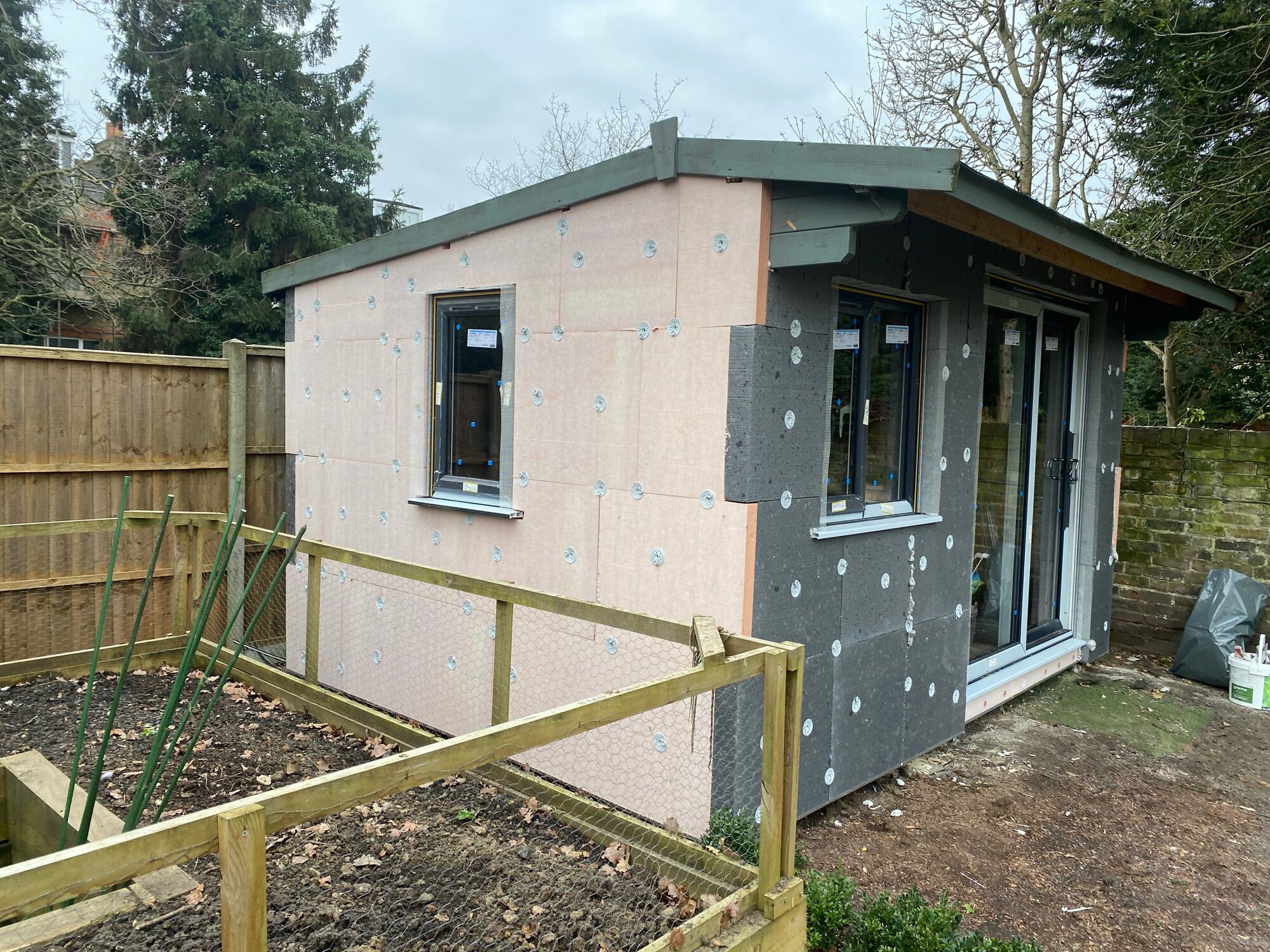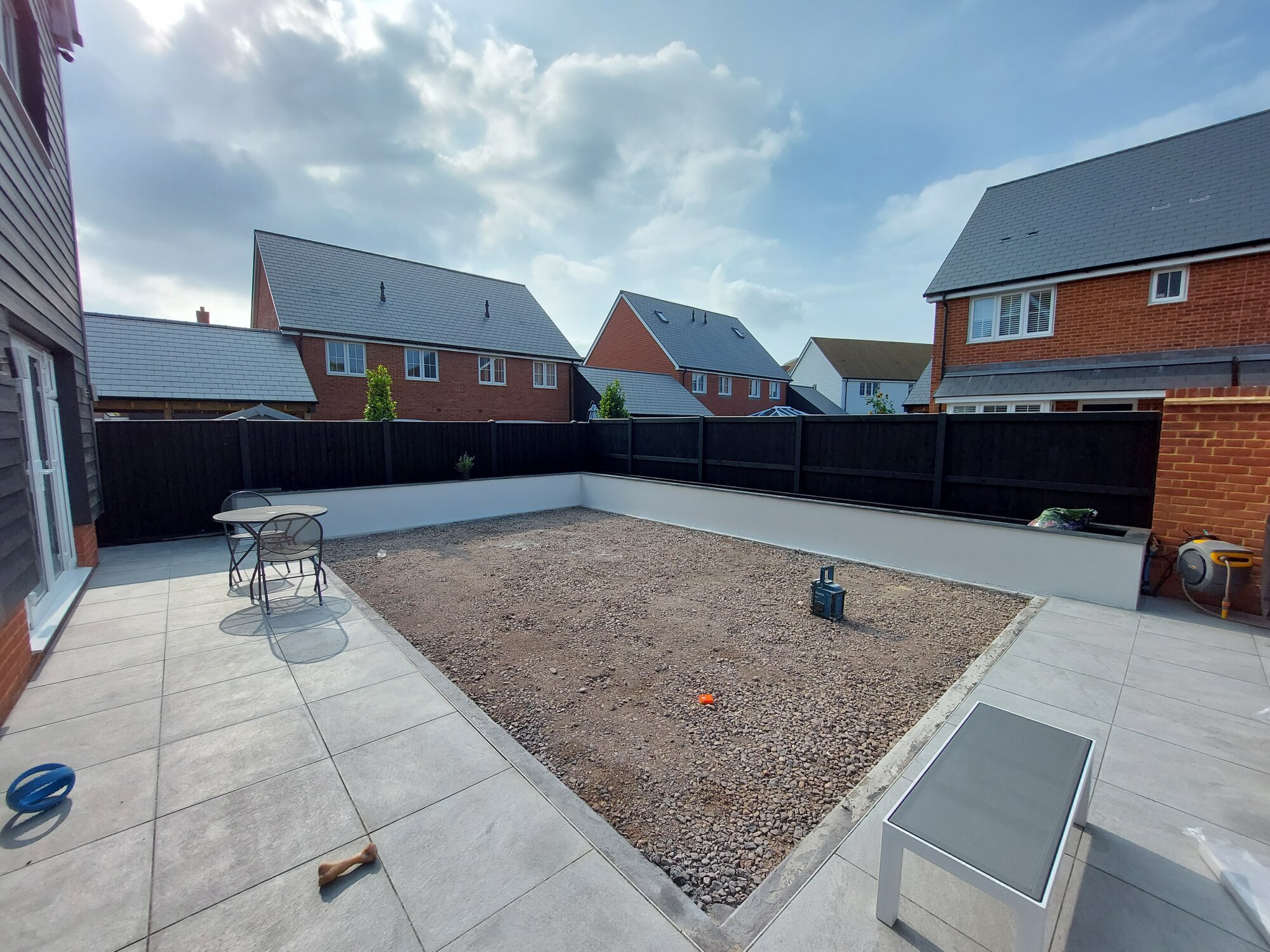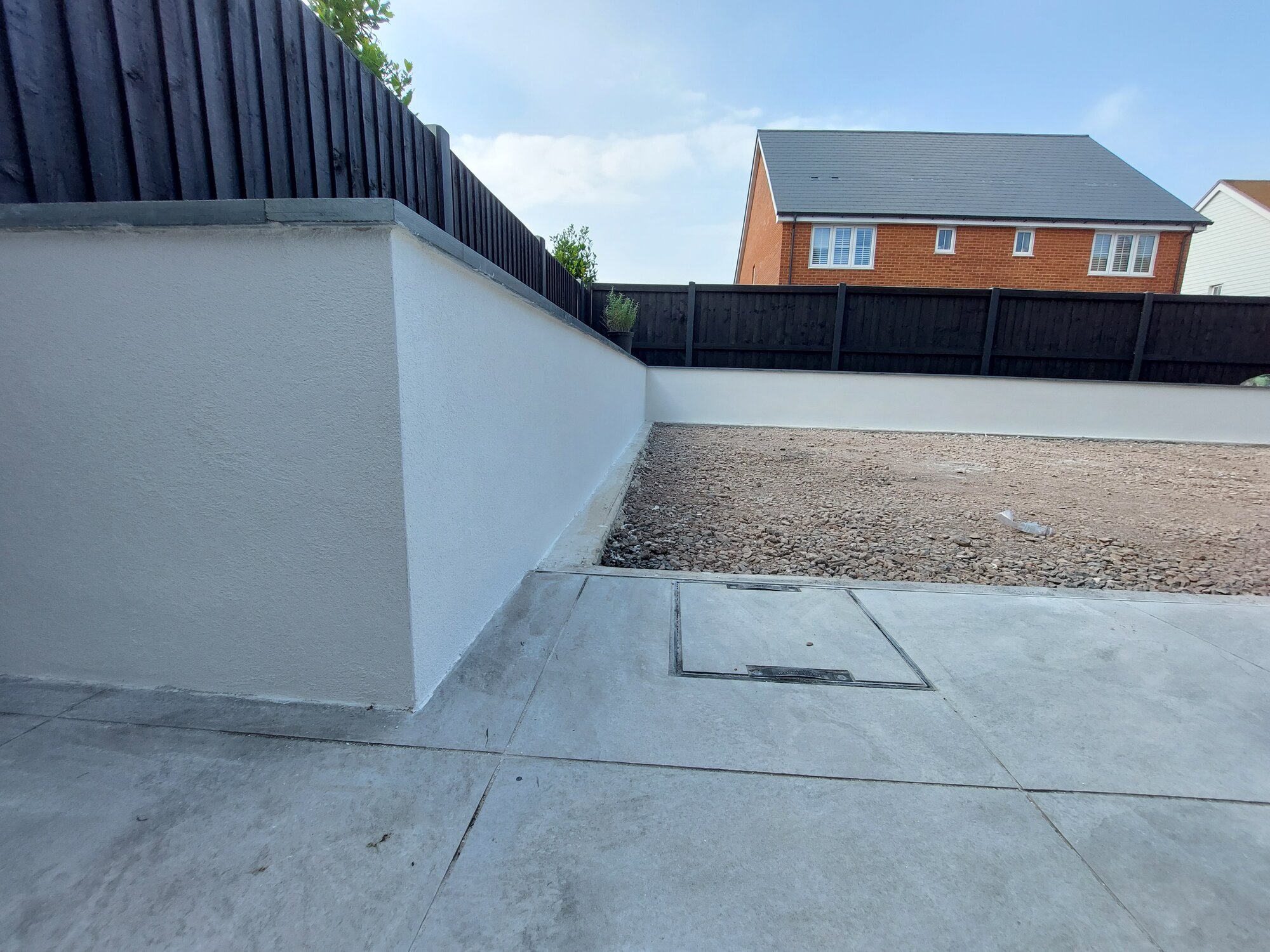
Render and insulation products are designed for insulating external walls. However, they can also be used internally, which we have discussed previously. Moreover, render and insulation can also be used in the garden to insulate sheds or protect any features.
Using render in the garden
Silicone render is a popular exterior coating for buildings. Moreover, it can also be used in the garden to protect and decorate walls, planters, and other structures. Silicone render is particularly suitable for outdoor use due to its durability and hydrophobic qualities.
- Wall cladding: Much like the external walls of your home, the walls of any structures in your garden will benefit from silicone render application. Garden sheds, outhouses, and greenhouses are all exposed to the elements. Therefore, a layer of silicone render will protect the building fabric of these structures. This also freshens up the aesthetic of these structures, masking any cracks on older installations. Silicone render, particularly EWI Store's range, can be tinted to any RAL, NCS or custom colour. Therefore, the render can be used in the garden to make a visually striking design statement.
- Planter boxes: Planter boxes made from wood or other materials susceptible to deterioration also benefit from a coating of silicone render. For example, any concrete planters will be protected from the weather and can be coated in almost any colour to match the other features in the garden.
- Garden furniture: Metal or wooden garden furniture will benefit from a silicone render coating to protect it from the elements. This will extend the life of your furniture and give it a unique, customized look.
Using insulation in the garden
Insulation is typically reserved for external and internal wall insulation. This keeps the building warm in the winter and cools in the summer. However, it performs the same function when used in the garden.
- Greenhouses: Insulation can be used to make greenhouses more energy-efficient, saving you money on heating costs. You can install insulation panels on the walls and roof of your greenhouse to keep the heat in during the winter and cooler in the summer.
- Tool storage: If you have a shed or other storage area for your gardening tools, you can use insulation to keep the temperature inside more moderate. This can help to prevent tools from rusting or becoming damaged due to extreme heat or cold.
- Water pipes: In colder climates, you can use insulation to protect water pipes from freezing. Wrapping pipes with insulation can help to keep the water flowing and prevent costly damage from burst pipes.
Using silicone paint in the garden
Silicone paint is a type of exterior paint that contains silicone resin, which makes it highly resistant to weathering, UV radiation, and water damage. Here are some ways you can use silicone paint in the garden:
- Wooden structures: You can use silicone paint to protect and beautify wooden structures in your garden, such as fences, decks, pergolas, and garden furniture. Silicone paint forms a waterproof barrier that prevents moisture from seeping into the wood and causing rot and decay.
- Concrete surfaces: Silicone paint can also coat concrete surfaces, such as walkways, walls, and retaining walls. It forms a protective layer that resists cracking and fading caused by exposure to sunlight and weather.
- Planters and pots: You can use silicone paint to customize and add colour to your planters and pots. This will not only protect the pots from weather damage but also create a unique look for your garden.
- Outdoor art: If you have sculptures or other outdoor art pieces in your garden, use silicone paint to protect and enhance their appearance. Silicone paint is highly resistant to weathering, which makes it ideal for outdoor art installations.
Working on a shed - our partner's example
The major benefit of using render and insulation in the garden is the same as using these products for external walls. Our partners at GreenAge (James) retrofitted their shed. As with most sheds, space is at a premium in the garden, therefore Kingspan K5 was utilised;
"In the end, I had to use a mix of EPS and Kingspan because of the overhang on the sides of the shed/office. The overhang only let me have a maximum of 80mm of space to work with, without having to extend the roof line. So bearing this in mind, I decided to use a 60mm Kingspan on the sides (the pink boards) and 100mm EPS on the front and back of the office (the grey boards). The u-value of the finished walls was less than 0.30w/m2k. A significant improvement on the average shed and probably an improvement on most offices in the UK!"
Rendering a planter wall in the garden
Another example of product use in the garden is the rendering of a planter wall. The wall in question is used to house soil and a variety of plants. It is exposed to the elements at all times, therefore the use of silicone render is crucial. EWI-075 Silicone Render provides a durable and hydrophobic envelope. As a result, the wall is protected from water ingress which could cause structural stability. The finish looks clean and professional.
If you have any questions about our products and how else you can use them, leave us a comment below!




